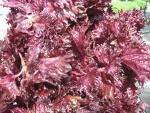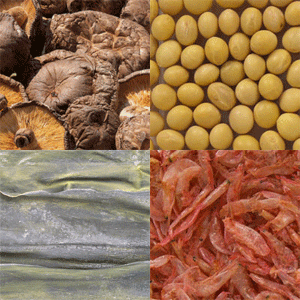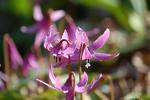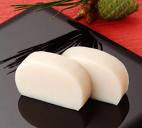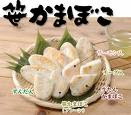[ . BACK to WORLDKIGO TOP . ]
::::::::::::::::::::::::::::::::::::::::::::::::::::::::::::::::::::::::::::::::::::::::::::::::::::
Local chicken (jidori) and niwatori
***** Location: Japan
***** Season: various, see below
***** Category: Humanity
*****************************
Explanation
Many areas have their special chicken breeds, called "local chicken", jidori 地鳥 (じどり ).
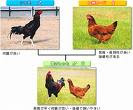
Hinai jidori, Nagoya koochin and Satsumadori are maybe the most famous.
The genaral name for chicken is "garden bird", niwatori 鶏 (にわとり).
Online reference : jidori chicken
Amakusa Dai-O, Amakusa daioo 天草大王 from Kumamoto
Hakata jidori はかた地鶏 from Fukuoka
Kashiwa かしわ from Shiga
Nambu kashiwa 南部かしわ from Iwate
Oku kuji shamo 奥久慈しゃも from Ibaraki
Tango kurodori 丹波黒どり from Kyoto/Hyogo
:::::::::::::::::::::::::::::::::::::::::::::::::::::::::::::::::::::::::::::::::::::::::::::::::::
. Aizu jidori 会津地鶏 local chicken from Aizu Wakamatsu
Fukushima
Awaodori 阿波尾鶏 from Tokushima
A special breed from 1989, with respect to the
Awa Odori 阿波踊り dance of Tokushima and is known for its beautiful tail. Breeding time is only 80 days, so it is rather cheap.
. . . CLICK here for Photos !
Gokuraku Onkei from Oita 極楽温鶏
Paradise Hot Spring Chicken
Whole chicken stuffed with cabbage and onions. Steamed for 2 1/2hours in the hot steam of the Komatsu Jigoku Hot Spring in Sujiyu, Kokonoe Machi 筋湯温泉九重町. A final drop of
kabusu lime juice adds flavor, so does some salt and pepper and ponzu sauce.
 . . . CLICK here for Photos !
. . . CLICK here for Photos !
jigoku mushi 地獄蒸し boiled in hot steam of a hot spring
::::::::::::::::::::::::::::::::::::::::::::::::::::::::::::::::::::::::::::::::::::::::::::::::::::
Hinaidori 比内鶏(ひないどり)
. . . CLICK here for Photos !
Hinai jidori 比内地鶏 . They have relatively little fat.
Since 21.7.1942 they are a precious national treasure (天然記念物).
They are bred in Akita in the Odate area and are usually not exported. They are used for a regional hodgepodge dish called
Kiritanpo, with
maitake mushrooms, burdock, leek and konnyaku.
Packets with smoked meat, hamburgers and sausssages of the meat are also sold.
To raise these chicken you have to follow strict regulations. The black earth of the area and clear water of the Dewa mountains also seems to play a part in their tasty meat.
Some farmers even play Mozart music to keep the chicken happy!
..........................................
Der Hinaidori stammt ursprunglich aus Odate, eine Stadt in der Provinz Akita (Nord-Japan). Die Rasse ist wahrscheinlich eine Kreuzung zwischen Shamo und Jidori (Bankiva-Typ). Heute sind die Hinaidori berühmt weil sie das Hauptingredient sind der Kiritanpo Nabe, eine Fleisch-Reis Suppe der angeblich Sumo-ringer extra viel Kraft verleiht.
Wie viele andere Japanische Rassen sind auch die Hinaidori zum Kulturdenkmal erklärt worden. Obwohl heute die Hinaidori das Gewicht auf 2.5 Kg und 3 Kg limitieren waren die erste Hinaidori viel schwerer, dies durch ihre Shamo Erbschaft. Die Hinaidori sind biss heute nur in Japan zu finden.
source : sakbrd.tripod.com
:::::::::::::::::::::::::::::::::::::::::::::::::::::::::::::::::::::::::::::::::::::::::::::::::::
kashiwa no sukiyaki かしわのすき焼き sukiyaki with chicken from Nara
Kawamata Shamo 川俣シャモ - Fukushima
with a Shamo festival in August
Momotaro jidori 桃太郎地鶏 Momotaro chicken from Okayama
:::::::::::::::::::::::::::::::::::::::::::::::::::::::::::::::::::::::::::::::::::::::::::::::::::
Nagoya Kochin, Nagoya koochin 名古屋こうちん , 名古屋コーチン supreme brown fowl
. . . CLICK here for Photos !
The supreme brown fowl,the Nagoya Kochin has been one of the specialities of Iwakura since old times. The damp climate of Iwakura,moderated by the Kiso river in the background,is ideal for breeding the Nagoya Kochin. These slowly reared fowls are very delicious.
The Nagoya Kochin sukiyaki,known in this region as “
Hikizuri" has a unique chewy texture,a tasty flavour and a delicious smell,and is one feature of Iwakura´s local cuisine.
source : www.city.iwakura.aichi.jp 愛知県岩倉
:::::::::::::::::::::::::::::::::::::::::::::::::::::::::::::::::::::::::::::::::::::::::::::::::::
 Onagadori
Onagadori (ながどり)尾長鳥 cock with a long tail
In Japanese literature nothing exact has been reported as to the origins of the breed called the Onagadori. The Japanese believe, however, that this breed came about by mutations of the breed Shokoku in the middle of the Edo Period (1600--1868). Oral history has delivered us the story that the territorial Prince (Shogun?) Yamanouchi in the Kochi Prefecture on the southern peninsula of Shikoku had the helmets and spears of his soldiers adorned with long rooster feathers for special occasions in order to honour the Emperor Tenno. The serfs and those subjected to the Prince, the farmers, who kept chickens of this type and delivered feathers for this important ornamental purpose were exempt from taxes. From this period, ca. 1655, onwards the (growth of longer feathers) steady lengthening of the feathers was to have had its beginnings. Helmets and spears of this period, which are adorned with long rooster feathers, can be seen today in Japanese museums.
A Mr. Tekeichi Riuemon from Shinohara in the Prefecture of Kochi on the island of Shikoku was supposed to have had a major breakthrough in breeding for the Longtails. For this reason the Onagadori's from this period were called "Shinoharato." After a period of time these birds were called "Nagaodori." Later one referred to them simply as "Tosa" in reference to the province in which they were mainly bred.
In the vicinity of the city of Kochi, on the street heading for the city of Nangoku, a monument was erect to honour Takeichi, a stone memorial that is still extant to this day.
The Japanese botanist Koyu Nishimura published a book in the year Ansei 4 (1857) with the title Sketches and Thoughts in which he described the phenomena of the continuous growth of the tail feathers of the Onagadori. From this point onwards the Onagadori was well know even among the common people of Japan.
The Onagadori became fully distinct and "thoroughbred" in the Taisho Period (1912 - 1926). From this point in time the tail feathers reached the incredible lengths of 6 metres and more. It is also in this period of time in which we find the explanations for the diverse comb and colour variations in the birds first imported to Europe.
source : www.feathersite.com / Brian Reeder
MORE : www.feathersite.com : Facts about Onagadori
. Clay Bell with a Kochi cock .
:::::::::::::::::::::::::::::::::::::::::::::::::::::::::::::::::::::::::::::::::::::::::::::::::::
Satsumadori 薩摩鳥 さつま地鶏 from Satsuma, Kyushu
. . . CLICK here for Photos !
The Satsuma-dori originates in Japan. Satsuma used to be the name of the prefecture now known as Kagoshima. In that time the breed was known as
Ojidori (oojidori, meaning large fowl) The name satsumadori (given in the twenties) means nothing more than: “Large fowl of Satsuma”. In 1943 the Japanese Ministry of Culture declared the breed “protected inheritance”. The breeds origin comes of cross-breeding Shamo and Shokoku and was a true “knifefighter”. These “speedfighters” were the only ones to fight steel spurs. Very likely the Japanese copied fightingstyles and breeding in knifespurs (slashers) of Philipinian breeders. As this breed carries a full, large, fanning tail it gained popularity (just like Sumatra and Yokohama) in Europe.
The weight of the rooster lies approximately around 3,5 kg (7,7 lbs) and for a hen around 2,5 Kg (5,5 lbs)
source : www.vechthoenders.com
:::::::::::::::::::::::::::::::::::::::::::::::::::::::::::::::::::::::::::::::::::::::::::::::::::::
Shamo 軍鶏(しゃも)a game fowl, fighting cock
. . . CLICK here for Photos !
Kampfhahn
koshamo 小軍鶏(こしゃも)small shamo
Ritual Cock Fighting is a kigo, see below.
:::::::::::::::::::::::::::::::::::::::::::::::::::::::::::::::::::::::::::::::::::::::::::::::::::
Tosajiro , Tosa jiroo 土佐次郎 from Kochi
Tosa-jiro
. . . CLICK here for Photos !
:::::::::::::::::::::::::::::::::::::::::::::::::::::::::::::::::::::::::::::::::::::::::::::::::::::
Ukokkei 鵜こっけい / 烏こっけい / 烏骨鶏 うこっけい
for producing eggs. The meat is used in noodle soups.
Ukokkei (Silkie) was said to have been introduced from China in early Edo Era, however, original place of Ukokkei is not clear. This breed shows many special morphological features: Black walnut comb with crest, Silky feather, Shank feather, Hind limb with fifth digit, Black colored skin, muscle, visceral organ and bone. Ukokkei is named after its black meat and bone. Ukokkei is known as medicinal chicken for revitalizer in traditional Chinese medicine and also has premium position as an ornamental animal.
Ukokkei was registered as one of Natural Monuments of Japan in 1942. Recently, Peoples are raising this breed not only as for an ornamental animal, also for production of the special meat and egg. Females still keep high broodiness. Tokyo strain was bred in Tokyo Metropolitan Animal Husbandry Experiment Station and shows higher egg production rate than usual Ukokkei population.
source : www.gene.affrc.go.jp
. . . CLICK here for Photos !
:::::::::::::::::::::::::::::::::::::::::::::::::::::::::::::::::::::::::::::::::::::::::::::::::::
Japanese Reference
source : 名古屋コーチン鳥料理レシピ
:::::::::::::::::::::::::::::::::::::::::::::::::::::::::::::::::::::::::::::::::::::::::::::::::::::
:::::::::::::::::::::::::::::::::::::::::::::::::::::::::::::::::::::::::::::::::::::::::::::::::::::
KIGO with CHICKEN
. First chicken 初鶏 (はつとり) hatsutori first cock calling
... hatsu koe 初声 (はつこえ ) first voice (of the cock)
keitan 鶏旦(けいたん)
"day when the cock craws"
the first day of the New Year
keijistu 鶏日(けいじつ)
"day of the chicken"
the 6th day of the New Year (according go the Asian lunar calendar)
kigo for the New Year
:::::::::::::::::::::::::::::::::::::::::::::::::::::::::::::::::::::::::::::::::::::::::::::::::::::
Tori awase 鶏合 (とりあわせ) Ritual Cock Fighting
kigo for late spring
tookei 闘鶏(とうけい), tori no keai 鶏の蹴合(とりのけあい)
"winning cock", kachidori 勝鶏(かちどり)
"loosing cock", makedori 負鶏(まけどり)
betting on cocks, kakedori 賭鶏(かけどり)
cock keeper, tookeishi 闘鶏師(とうけいし)
. Tokei Jinja 闘けい神社 / 闘鶏神社 (とうけいじんじゃ)
Cockfight Shrine at Tanabe, Kumano, Wakayama
and the historic divinatory cockfight for Heike and Genji warriors.
:::::::::::::::::::::::::::::::::::::::::::::::::::::::::::::::::::::::::::::::::::::::::::::::::::::
niwatori hajimete tsurumu
鶏初めて交む (にわとりはじめてつるむ )
..... tori tsurumisomu 鶏交み初む(とりつるみそむ)
..... tori turumisu 鶏交みす(とりつるみす)
first time of mating for the chickens
kigo for late winter
torizoosui 鶏雑炊(とりぞうすい)
rice porridge with chicken
torisuki 鶏すき(とりすき)
sukiyaki with chicken meat
kigo for all winter
:::::::::::::::::::::::::::::::::::::::::::::::::::::::::::::::::::::::::::::::::::::::::::::::::::::
:::::::::::::::::::::::::::::::::::::::::::::::::::::::::::::::::::::::::::::::::::::::::::::::::::::
FOOD
iridori いりどり【煎り鳥・炒り鳥】 roasted chicken
Chicken meat fried with vegetables in soy sauce with sugar and sake.
. . . CLICK here for Photos !
Chankonabe (ちゃんこ鍋)
is a Japanese stew (a type of nabemono or one-pot dish) commonly eaten in vast quantity by sumo wrestlers as part of a weight gain diet. It contains a dashi or chicken broth soup base with sake or mirin to add flavor. The bulk of chankonabe is made up of large quantities of protein sources (usually chicken (quartered, skin left on), fish (fried and made into balls), tofu (or sometimes beef) and vegetables (daikon, bok choy, etc). While considered a reasonably healthy dish in its own right, chankonabe is very protein-rich and usually served in massive quantities, with beer and rice to increase the caloric intake. Leftover chankonabe broth can also later be used as broth for somen or udon noodles.
Chankonabe served during sumo tournaments is made exclusively with chicken, the idea being that a rikishi should always be on two legs like a chicken, not all fours like a cow or off one's legs entirely like a fish (i.e., in a position of one who has just lost a match).
© More in the WIKIPEDIA !
. . . CLICK here for Photos !
Sumoringer-Eintopf
. WKD : more about SUMO wrestling
*****************************
Worldwide use
Das japanische Ur-Huhn
Die ersten Hühner (niwatori, wörtlich "Vogel im Garten") wurden in Südostasien bereits vor 4000 Jahren als Haustiere gehalten, in China sind sie etwa seit 2700 v. Chr. bekannt. Die Hühnerzucht weitete sich im dritten Jahrhundert v. Chr. auch auf Japan aus.
Hinaidori ist eine Hühnerrasse, die bereits seit dieser Zeit in Akita, in der Flussregion Yoneshirogawa und der Gegend Hinai als Haustier gehalten wird. Der Hals ist lang und der Kamm nur klein. Bis heute hat es sich die Charakteristiken des Wildhuhns bewahrt. Die Tiere sind nicht sehr groß und ihr Fortpflanzungstrieb ist nicht so stark ausgeprägt wie bei anderen Hühnerrassen.
Das fettarme Fleisch ist wohlschmeckend, nicht zu hart und verleiht einer Suppe einen kräftigen Geschmack. Möglicherweise trägt die spezielle schwarze Erde der Hinai-Gegend dazu bei. Schon die japanischen Ureinwohner, die Ainu, wussten von dieser besonderen Erde zu profitieren. Das reine Wasser der Bergregion von Dewa ist ebenfalls ein Grund für den Zuchterfolg der Hinaidori. Manche Züchter bemühen sich auf andere Weise um ihre Hühner; sie spielen für ihre Tiere im Stall Mozart-Melodien, um sie bei guter Laune zu halten. Nichtsdestotrotz ist die besondere Bedeutung dieser Hühnerrasse für die Japaner daran zu erkennen, als dass sie seit Juli 1942 offiziell zum Naturdenkmal Japans erklärt wurde.
Bei der Zucht dieser Rasse müssen die Hinaidori-Hühnerfarmen zahlreiche Vorschriften beachten und diese werden streng überwacht: Auf 3,3 Quadratmetern Land dürfen nicht mehr als 1 bis 1,5 Tiere gehalten werden. Die Tiere müssen sich zudem frei bewegen können und müssen mindestens 180 Tage aufgezogen werden. Und schließlich sind zum Verzehr lediglich weibliche Tiere zugelassen.
Die Stadt Odate in Akita veranstaltet jährlich im Januar einen gut besuchten Hinaidori-Hühnermarkt. Von shintoistischen Zeremonien bis zur Verkaufsausstellung – alles dreht sich ums Huhn. An einem 15 Meter langen Eisenspieß werden zu diesem für die Region wichtigen Anlass gleichzeitig 1000 Hähnchen rundum gegrillt.
In Geschenkpackungen als Reisemitbringsel finden sich Hamburger mit Hinaidori oder Würstchen sowie Geräuchertes aus diesem Hühnerfleisch.
Die drei wichtigsten Hühnerrassen
In ganz Japan sind rund 60 Hühnerrassen beheimatet, zu den drei bekanntesten zählen neben der beschriebenen Hinaidori aus Tohoku, die Rassen
Satsumadori aus Kyūshū (besser ohne Längenzeichen?` ) und
Nagoya Kōchin aus Zentral-Honshu.
Im Jahr 1943 wurde die Kampfhuhnrasse Satsumadori (Satsuma ist der ehemalige Name von Kagoshima auf der Insel Kyūshū) zum japanischen Kulturgut (tennen kinenbutsu, das war oben Naturdenkmal. ) erklärt. Allerdings sind mittlerweile einige Rassen eingekreuzt worden, und nur Hühner mit einem Genanteil von 50 % der ursprünglichen Rasse dürfen sich Satsumadori nennen. Sie sind besonders groß und aufrecht und haben einen sehr langen schirmartigen Schwanzaufbau. Auch in Europa hat die Rasse inzwischen Einzug gehalten.
Die braune Hühnerrasse Nagoya Kōchin stammt aus dem Dorf Iwakura am Fluss Kisogawa, einer feuchten Gegend, die für die Aufzucht dieser Rasse optimale Bedingungen bietet. Das Fleisch dieser Hühner ist bestens zum Verzehr geeignet, sehar zart, aromatisch und wohlschmeckend und wird für viele Hühnergerichte verwendet, sehr beliebt ist eine Sukiyaki-Variante mit Nagoya-Kōchin-Hühnerfleisch.
Eine Besonderheit stellt die Rasse
Ukokkei (wörtlich "abenknochen") dar. Haut, Eingeweide und Knochen sind schwarz, die Federn entweder weiß oder schwarz und die Zehen haben jeweils fünf Krallen. In China werden diese Hühner als heilige Vögel betrachtet, deren Verzehr dem Essenden ein langes Leben, ja sogar die Unsterblichkeit verheißt. In der Tat ist das Fleisch wohlschmeckend und wird auch in Japan sehr teuer gehandelt. Viele Bauernfamilien halten einige dieser Tiere für den Eigenbedarf.
*****************************
Things found on the way
Men posing as Chicken
Utagawa Toyokuni ukiyo-e prints (1809)

and posing as other birds
source : Miburi-e ... Men posing as Animals. Woodblock prints
miburi-e 身振絵 man posing as animals
*****************************
HAIKU
fuyugomori tori ryoori ni mo nebutsu kana
winter seclusion --
cooking a chicken
praising Buddha
ISSA . winter seclusion
:::::::::::::::::::::::::::::::::::::::::::::::::::::::::::::::::::::::::::::::::::::::::::::::::::::
尾長鳥生きた化石のように立ち
onagadori ikita kaseki no yoo ni tachi
long-tailed cock ...
it stands up like a
living fossile
Yanagisoo 柳窓
::::::::::::::::::::::::::::::::::::::::::::::::::::::::::::::::::::::::::::::::::::::::::::::::::::
Ito Jakuchu 伊藤若冲
gunkei 郡鶏 many roosters
 . Ito Jakuchu 伊藤若冲 .
. Ito Jakuchu 伊藤若冲 .
.................................................................................
roosters by Kano Sanraku 狩野山楽

 - Reference Paintings -
*****************************
Related words
- Reference Paintings -
*****************************
Related words
*****
. Market on the Day of the Rooster
(tori no ichi 酉の市)
First day of the rooster in November
*****
WASHOKU : Kiritanpo (kiritampo) skewers of mashed rice
*****
WASHOKU : NGREDIENTS
. Tori 酉 Year of the Rooster (chicken, cock) - 2017 .
:::::::::::::::::::::::::::::::::::::::::::::::::::::::::::::::::::::::::::::::::::::::::::::::::::::::::::::::::::::::::::
[ . BACK to DARUMA MUSEUM TOP . ]
[ . BACK to WORLDKIGO . TOP . ]
:::::::::::::::::::::::::::::::::::::::::::::::::::::::::::::::::::::::::::::::::::::::::::::::::::::::::::::::::::::::::::







